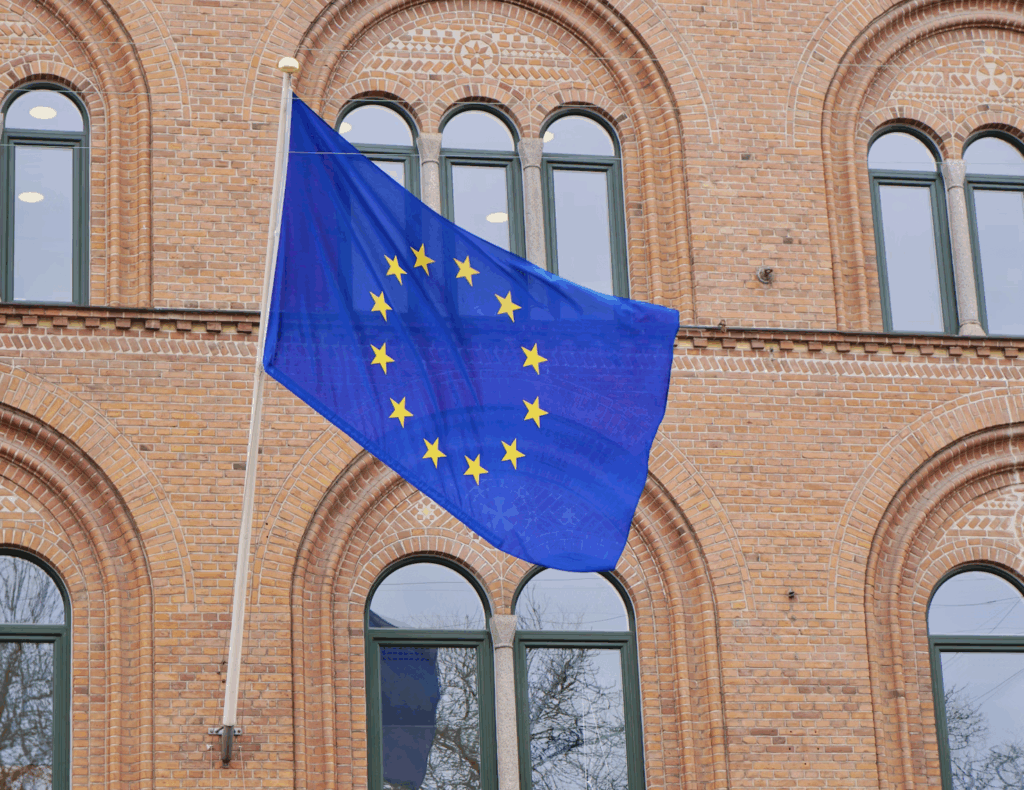Phil Knight and Bill Bowerman needed a logo. In the late 1960s, their fledgling athletic footwear company called Blue Ribbon Sports was barely five years old and headed for a sweeping corporate shift, the one that would see the company branch out from footwear importer to footwear designer and manufacturer. That momentous shift was marked with a formal name change – from Blue Ribbon to Nike, a nod to the Greek goddess of victory – and the path was paved towards what would become the most valuable athletic apparel and footwear brand in the world.
But long before Nike – which got its start under the watch of Knight, a former college runner, and Bowerman, Knight’s coach during his time at the University of Oregon – would actually nab its top-of-the-game title, it would need a mark to identify its brand and its offerings in the minds of consumers.
As the story goes, beginning in the late 1960s, following a stint in the U.S. Army and after earning his MBA from Stanford University, Knight took up teaching accounting at Portland State University. At the same time, he was also pursuing a more passion-oriented project: a budding footwear brand called Blue Ribbon Sports, a venture that started as a resale business of sorts, with Knight importing footwear from Onitsuka Tiger, the Japanese footwear company, and distributing it in the U.S. (That aspect of the venture would ultimately fall apart in light of tension with Onitsuka, and a fledging Nike would come into full view).
The Birth of a Brand
In need of charts to present to Onitsuka’s executives, Knight enlisted the help of Carolyn Davidson, a graphic design student at the university – who was in need of cash – to help him. Over time, an enthusiastic Davidson’s duties expanded from creating charts of Knight’s market findings and financial projections to designing advertisements for his up-and-coming Blue Ribbon Sports label (which would come to be entirely distinct from Onitsuka Tiger … and come to be Nike).
Eventually, amidst a fall out with Onitsuka, Knight and Bowerman, preparing to launch a new shoe, needed a logo to help set their offerings apart from Onitsuka and also the likes of Puma and adidas.
The shoe in question, a black football boot called “the Nike,” was produced in Mexico in early 1971, with a retail price of $16.95. To distinguish it from Onitsuka’s models, Knight needed a mark. He turned to Davidson, whom he had first hired after overhearing her lament that she could not afford an oil painting course.

Tasked with coming up with a logo, Davidson told Portland State University in an interview decades later, “I didn’t hesitate, and as luck would have it, I didn’t have any competition.” The one bit of guidance Knight gave her: he wanted the logo “to look like speed.”
Davidson produced half a dozen sketches. In a Tigard, Oregon, office, Knight, Bowerman, and two early employees, including Jeff Johnson – Nike’s first full-time hire – reviewed the options. None impressed. Johnson later recalled that the decision “came down to which was the least awful.” Knight, who would make the ultimate decision, was not drawn to any of them. Yet, pressed for time, he returned to one: a checkmark-like swoosh. “I don’t love it, but maybe it will grow on me,” he famously said at the time.
That logo, rushed off to a factory so production of the Nike football boot could begin, is now one of the most famous in the world.
Since Beaverton, Oregon-based Nike’s swoosh was Davidson’s first professional design job, she did not know what to charge for her work. So, she opted for a rate of $2 for each of the 17.5 hours she spent on the various logos, and sent the Nike co-founders a bill for $35, a sum that, if adjusted for inflation, would amount to nearly $221 in 2019 – a virtual steal compared to the reported $1 million that Pepsi paid to the now-defunct Arnell Group in 2009 for its logo or the whopping $221 million that oil company BP spent to reformulate and roll out its branding in 2000.
Interestingly enough, it would be revealed years later that Davidson was ultimately compensated quite a bit more than that initial $35. Speaking at a Nike event in 2010, Knight told shareholders that when Nike listed on the New York Stock Exchange in December 1980, “We called [Davidson] back up and gave her 500 shares of stock, which she has never sold, and is [now] worth close to $1 million.”
Early Uses & Inconsistencies
Those first shoes carried the Swoosh into the world, but the logo looked different on nearly every model. Factories stitched it however they could, leaving some stretched wide and others pinched tight. One runner joked that the curvier version resembled a “dead fish.” But despite its uneven application, the mark was already visible on major stages: at the 1972 Boston Marathon, two of the top American finishers crossed the line in Nike shoes adorned with Davidson’s design – the first confirmed appearance of a Swoosh in a major race.
On apparel, the asymmetry of the Swoosh presented challenges. Jeff Johnson experimented by arranging multiple swooshes into a circle, creating the “Sunburst” or “Pinwheel” logo, which appeared on products at the 1976 Olympic Track and Field Trials. Nike’s third employee, Geoff Hollister, also pushed the logo in new directions, including a lone, backwards Swoosh across a tracksuit worn by Steve Prefontaine in Tacoma in 1974 – the first time the logo stood alone on apparel.
In those early years, the Swoosh was far from consistent. Some called it “the stripe.” Others thought it looked strange or unbalanced. But on marathon finish lines, Olympic warm-ups, and on the chest of America’s most famous runner, the mark was already doing its job: it was sticking.
From Registration to Recognition
In terms of the logo itself, counsel for Nike wasted little time filing an initial application to register the design with the U.S. Patent and Trademark Office in January 1972, just over six months after Nike claims that it used the logo on athletic shoes (in commerce) for the very first time. The trademark registration would be issued to Beaverton-based BRS, Inc. – Blue Ribbon Sports, Inc. – two years later, and the mark would be used – and the seemingly countless infringing uses policed – consistently for the next 45 years and likely, for decades still to come. (Also among Nike’s 800-plus U.S.-registered trademarks: the word “Swoosh,” which Nike first filed to register in 1981 and received a registration for in 1982.)
As for value, Nike’s swoosh logo has consistently been characterized as one of the most recognizable – and thus, valuable – logos in the world. The swoosh logo, along with Nike’s trademark-protected name, are two of the most important assets of the Nike brand, which is worth a whopping $36.8 billion, according to Forbes’ “World’s Most Valuable Brands” list.
London-based consultancy Brand Finance similarly quantifies the value of companies from a branding perspective (i.e., as distinct from their pure financials and market capitalization) on an annual basis. Assigning a “brand value” to companies, Brand Finance aims to capture “the value of the [brand’s] trademark and associated marketing intellectual property within the branded business,” including intangible assets that “create distinctive images and associations in the minds of stakeholders, and generate economic benefits.”
For 2019, it put Nike’s brand value – driven in large part by its swoosh mark – at $32.4 billion, situating the 55-year-old company far ahead of fast fashion behemoth Zara ($18.4 billion), arch-rival adidas ($16.6 billion), and even luxury entities such as Louis Vuitton ($13.5 billion), Rolex ($8.04 billion), Gucci ($10.2 billion), and Hermès ($10.9 billion).
More Than Just a Logo
Aside from the enormous dollar value that could very well be assigned to Nike’s world-famous Swoosh (although valuing individual trademarks is far from an exact science), Nike – which continues to hold the title of the world’s most valuable apparel/footwear brand – garners another benefit from the mark, an intangible one. The Swoosh communicates the core principles and vision of the Nike brand, which is in many cases precisely what consumers are buying into when they purchase a Nike shoe or garment.
They are purchasing the shoe or hoodie and its practical perks, but in equal part, consumers are also buying into the storytelling elements of Nike’s brand – its core values and mission – when they opt for a swoosh-adorned product, in much the same way that a consumer chooses a logo-covered luxury bag or pair of glasses.
In this sense, the Swoosh is part of a far larger picture, and a price cannot easily be put on the sheer value of that goodwill – unless it can: $153 billion, Nike’s current market cap.














